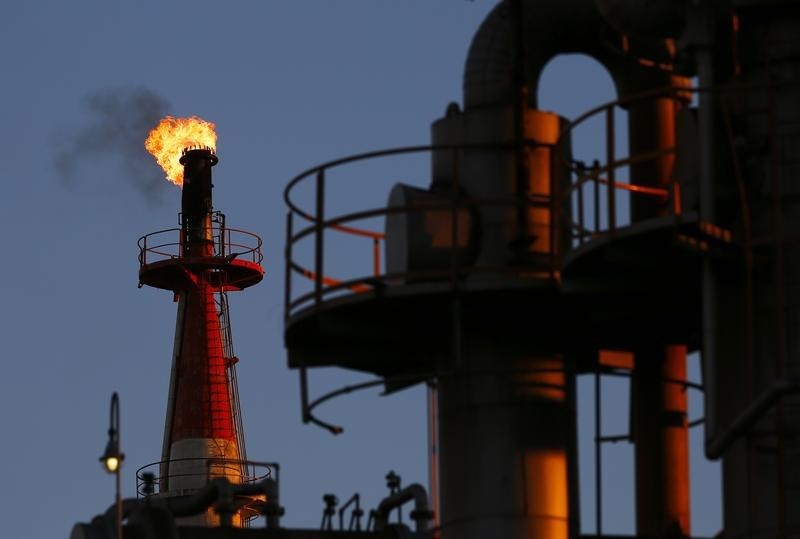* Brent up around 25 pct from January intra-day low
* Analysts say deal between Russia-OPEC possible
* Iran oil exports set to rise in January, February
(Updates prices, adds Lavrov, U.S. GDP)
By Simon Falush and Dmitry Zhdannikov
LONDON, Jan 29 (Reuters) - Oil rose towards $35 a barrel on
Friday, a gain of some 25 percent from the 12-year lows seen
earlier in January, on prospects that a deal between major
exporters to cut production could help reduce one of the worst
oil gluts in history.
Brent futures LCOc1 have jumped by around a quarter since
hitting an intra-day low of $27.10 a barrel on Jan. 20. It hit a
high on Thursday of $35.84.
Brent was up 88 cents at $34.77 a barrel by 1433 GMT on
Friday, after gaining 79 cents, or 2.4 percent, on Thursday.
U.S. crude CLc1 was up 92 cents at $34.15 a barrel, having
settled up 92 cents, or 2.9 percent, at $33.22 on Thursday. Both
contracts added to gains after weak U.S. GDP data raised
expectations the U.S. Federal Reserve would go slow on future
interest rate hikes.
Non-OPEC Russia said this week it could cooperate with OPEC
on production curbs, something it had been refusing to do for 15
years.
On Friday, Moscow sent confusing signals as Deputy Prime
Minister Arkady Dvorkovich said Russian output could decline as
a result of lower investment, but the state would not intervene
to balance the market.
That appeared to pour cold water on possible joint OPEC and
non-OPEC production cuts mentioned by Russian Energy Minister
Alexander Novak on Thursday.
But a few hours later, Russia's foreign ministry said
veteran minister Sergei Lavrov, who almost never comments on oil
policies, would visit the UAE and Oman to discuss oil markets.
Many analysts think there is still a chance of a deal.
"As the headlines fly it is difficult to be absolutely sure
about each word used but we don't read 'no meeting scheduled
yet' the same as 'no meeting scheduled'," Olivier Jakob, analyst
at Petromatrix in Zug, Switzerland said.
"The 'yet' is not necessarily a 'nyet' and we can therefore
continue to speculate about a possible meeting."
"While we view this outcome as unlikely, a 5 percent
production cut by just Saudi Arabia and Russia would be
sufficient to bring the market close to balance," Jefferies said
in a research note on Friday, referring to Russia's comment.
Figures from Iran underlined the fact that there is no end
in sight to the glut in the market unless there is a cut in
production by major exporters.
Iran's oil exports are set to rise more than a fifth in
January and February from last year's daily average, data from a
source with knowledge of its loading schedules shows, revealing
how Tehran is ramping up sales after the lifting of sanctions.
"If OPEC proposes to Russia production limits that do not
undermine Russia's long-term objectives, and key Russian
producers back the deal, Russia may indeed agree to production
limits," said analysts from U.S. based ESAI Energy.
